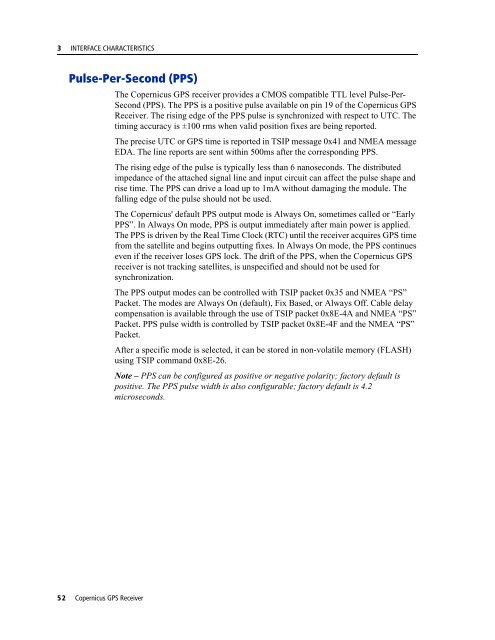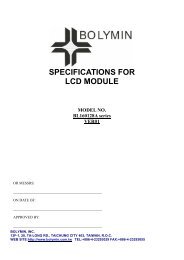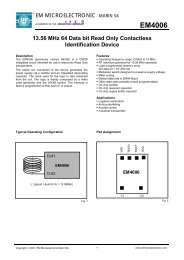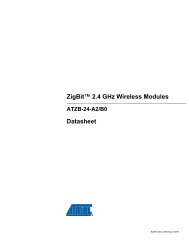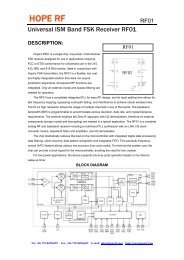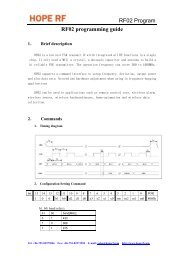REFERENCE MANUAL - FTP Directory Listing - Trimble
REFERENCE MANUAL - FTP Directory Listing - Trimble
REFERENCE MANUAL - FTP Directory Listing - Trimble
Create successful ePaper yourself
Turn your PDF publications into a flip-book with our unique Google optimized e-Paper software.
3 INTERFACE CHARACTERISTICS<br />
Pulse-Per-Second (PPS)<br />
The Copernicus GPS receiver provides a CMOS compatible TTL level Pulse-Per-<br />
Second (PPS). The PPS is a positive pulse available on pin 19 of the Copernicus GPS<br />
Receiver. The rising edge of the PPS pulse is synchronized with respect to UTC. The<br />
timing accuracy is ±100 rms when valid position fixes are being reported.<br />
The precise UTC or GPS time is reported in TSIP message 0x41 and NMEA message<br />
EDA. The line reports are sent within 500ms after the corresponding PPS.<br />
The rising edge of the pulse is typically less than 6 nanoseconds. The distributed<br />
impedance of the attached signal line and input circuit can affect the pulse shape and<br />
rise time. The PPS can drive a load up to 1mA without damaging the module. The<br />
falling edge of the pulse should not be used.<br />
The Copernicus' default PPS output mode is Always On, sometimes called or “Early<br />
PPS”. In Always On mode, PPS is output immediately after main power is applied.<br />
The PPS is driven by the Real Time Clock (RTC) until the receiver acquires GPS time<br />
from the satellite and begins outputting fixes. In Always On mode, the PPS continues<br />
even if the receiver loses GPS lock. The drift of the PPS, when the Copernicus GPS<br />
receiver is not tracking satellites, is unspecified and should not be used for<br />
synchronization.<br />
The PPS output modes can be controlled with TSIP packet 0x35 and NMEA “PS”<br />
Packet. The modes are Always On (default), Fix Based, or Always Off. Cable delay<br />
compensation is available through the use of TSIP packet 0x8E-4A and NMEA “PS”<br />
Packet. PPS pulse width is controlled by TSIP packet 0x8E-4F and the NMEA “PS”<br />
Packet.<br />
After a specific mode is selected, it can be stored in non-volatile memory (FLASH)<br />
using TSIP command 0x8E-26.<br />
Note – PPS can be configured as positive or negative polarity; factory default is<br />
positive. The PPS pulse width is also configurable; factory default is 4.2<br />
microseconds.<br />
52 Copernicus GPS Receiver


